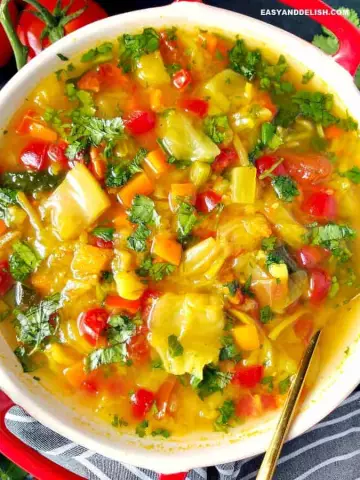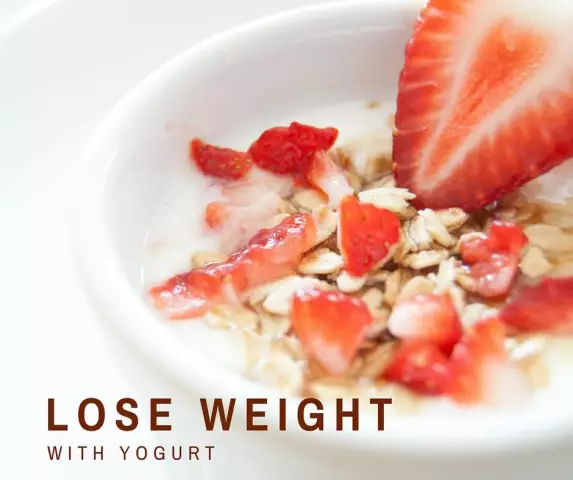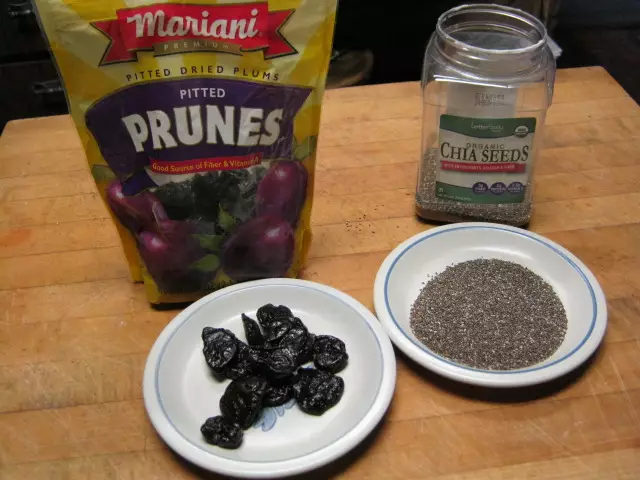- Author Rachel Wainwright [email protected].
- Public 2023-12-15 07:39.
- Last modified 2025-11-02 20:14.
Calorie content of cabbage

Cabbage or garden cabbage is an agricultural crop that is one of the most important vegetable plants due to its medicinal properties and nutritional value. Low-calorie cabbage is one of the most important ingredients in medical diets and nutritional systems for effective weight loss. Diet dishes made from cabbage are tasty, nutritious and rich in vitamins, and due to their healing properties, they are included in the diet of patients suffering from gastrointestinal diseases. What are the health benefits of cabbage? How to cook cabbage for weight loss?
Cabbage: calorie content, useful properties, the use of cabbage
Fresh cabbage, the calorie content of which is only 24 calories per 100 g of product, has a number of medicinal properties due to the high level of sucrose, mineral salts of potassium, calcium, sulfur, phosphorus, lactose, and a number of enzymes (lipase, protease). Cabbage, the calorie content of which remains at a fairly low level with various cooking methods, is also rich in vitamins A, B1, B6, C, P, K, as well as vitamin U, which has antiulcer properties. Phytoncides (biologically active substances formed by plants) in cabbage inhibit the growth and development of bacteria, fungi and protozoa in the body. The rich enzymatic composition accelerates the digestion and breakdown of fats (with the help of the lipase enzyme) in the body, which contributes to effective weight loss.
Nutrient composition of cabbage, the calorie content of which varies depending on the cooking method:
- Proteins - 1.8 g;
- Fat - 0.1 g;
- Carbohydrates - 6.8 g.
The pharmacological properties of the product are very diverse. Cabbage, whose calorie content and vitamin composition makes it an irreplaceable product of the daily diet, accelerates metabolic processes in the body. Cabbage has analgesic and anti-inflammatory effects. This vegetable is included in medical diets prescribed for stomach ulcers, duodenal ulcers, colitis, gastritis, liver diseases. The vitamins contained in cabbage help to strengthen the walls of blood vessels. Cabbage is useful for atherosclerosis, gout, ischemic heart disease, gallstone disease, kidney disease (potassium salts remove fluid from the body), constipation and intestinal dysfunction, gastritis with low acidity.
Cabbage stimulates the secretion of the gastric glands and is not recommended in case of increased gastric acidity. Cabbage dishes are not recommended to be included in the dietary menu for enteritis and diarrhea, since coarse dietary fiber contributes to bloating.
Due to its unique properties, cabbage is used in cooking for the preparation of various dietary dishes, in dietetics - to correct many conditions, in cosmetology - to cleanse the skin and normalize the secretion of the sebaceous glands of the skin.
Slimming cabbage
Cabbage for weight loss is an indispensable product that allows you to eat varied and satisfying during the diet. How does cabbage help you lose weight? Cabbage, the calorie content of which is quite low, contains coarse dietary fiber that helps to remove toxins, toxins, cholesterol from the body. Slimming cabbage is effective due to the following properties:
- Rich enzymatic composition. In addition to the fiber content, cabbage contains tartronic acid, which slows down (inhibiting property) the processing of carbohydrates by the body and their transformation into fats. Tartronic acid is destroyed by heat treatment of the product;
- Low calorie content (the highest calorie content of cabbage, stewed with meat - 160 calories).
Sauerkraut, the calorie content of which allows it to be included in any dietary menu, allows not only to effectively reduce weight, but also to replenish the balance of vitamins, micro- and macroelements. Cabbage provides long-term satiety, allowing you to eliminate unnecessary snacks from the diet, as well as avoid the physiological and psychological stress that inevitably arises with many restrictive diets.

If you follow diets, fresh cabbage, the calorie content of salads from which does not exceed 50 calories per 100 g, which is explained by the addition of vegetable fats, is recommended to be consumed in limited quantities in order to avoid bloating and discomfort in the digestive tract. For effective weight loss, cabbage is recommended to be stewed, baked in the oven or boiled. It is recommended to cook cabbage for weight loss in its pure form, without adding meat, which significantly reduces the calorie content of the dish. For the preparation of cabbage, the calorie content of which will be kept at a sufficiently low level, it is recommended to use vegetable fats (sunflower, olive oil).
Diet dishes from cabbage
Due to the taste of cabbage, calorie content, ease of preparation, shelf life and high content of nutrients that remain in cabbage for a long time, this vegetable has taken one of the leading places in dietetics. Cabbage is used fresh, boiled, baked, stewed, fried, pickled, pickled, and also used in cooking as a filling. For a diet, cabbage, the calorie content of which directly depends on the method of its preparation, is recommended to be consumed raw or boiled, as well as sauerkraut or stewed.
How many calories are in stewed cabbage? There are several ways to prepare dietary cabbage dishes, including stewing. When vegetable fats are added when stewing cabbage, its calorie content increases to 118 calories. When adding animal fats to cabbage, its calorie content can reach up to 168 calories per 100 g of product. The best way to cook stewed cabbage is to add 1 tablespoon of vegetable oil (preferably olive oil) and 100 ml of boiled water, as well as spices, salt and sugar. The cabbage is stewed until tender. When cooking cabbage in this way, you can not think about how many calories there are in stewed cabbage, and eat the dish without significant restrictions. Some recipes recommend adding chicken broth to cabbage instead of water, the calorie content of which will increase significantly. With this method of cooking cabbage, the calorie content reaches 130 calories per 100 g of the finished dish.
Among the dishes made from fresh cabbage, the calorie content of which is kept at a low level, include various salads, for which sauerkraut is also used. The calorie content of such a dish will vary depending on the additional ingredients: vegetables, meat, dressings. To maintain a minimum calorie level in sauerkraut, it is recommended to use it with a small amount of vegetable oil. Sauerkraut, whose calorie content is kept at an extremely low level, is an irreplaceable source of vitamins and valuable nutrients for the winter. This dietary cabbage dish will help diversify the diet of any diet without violating the daily calorie limit.
Found a mistake in the text? Select it and press Ctrl + Enter.






